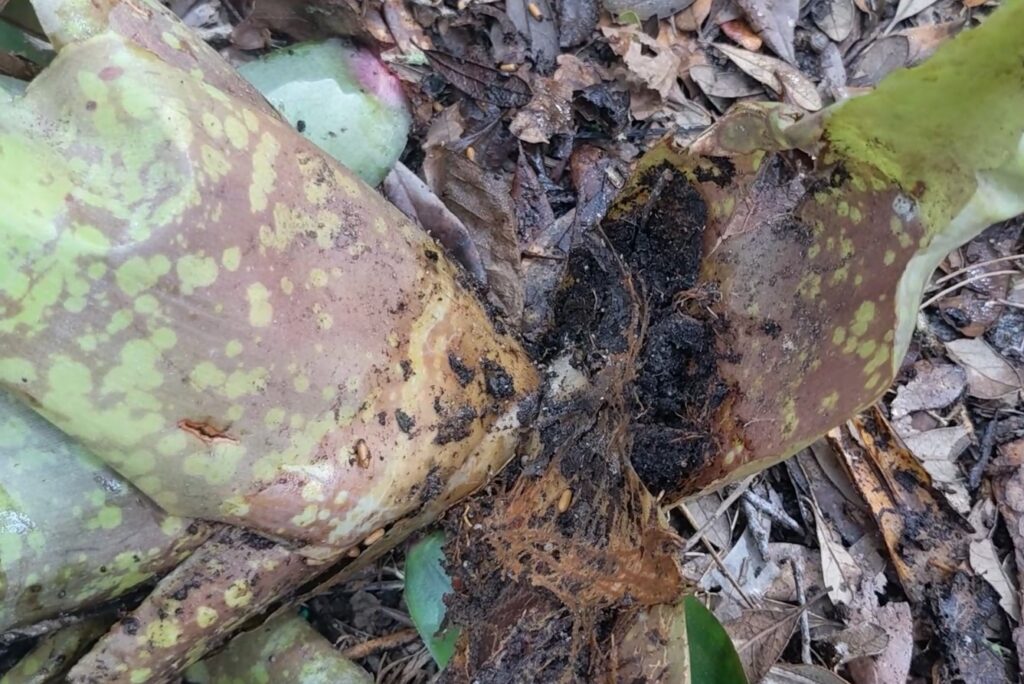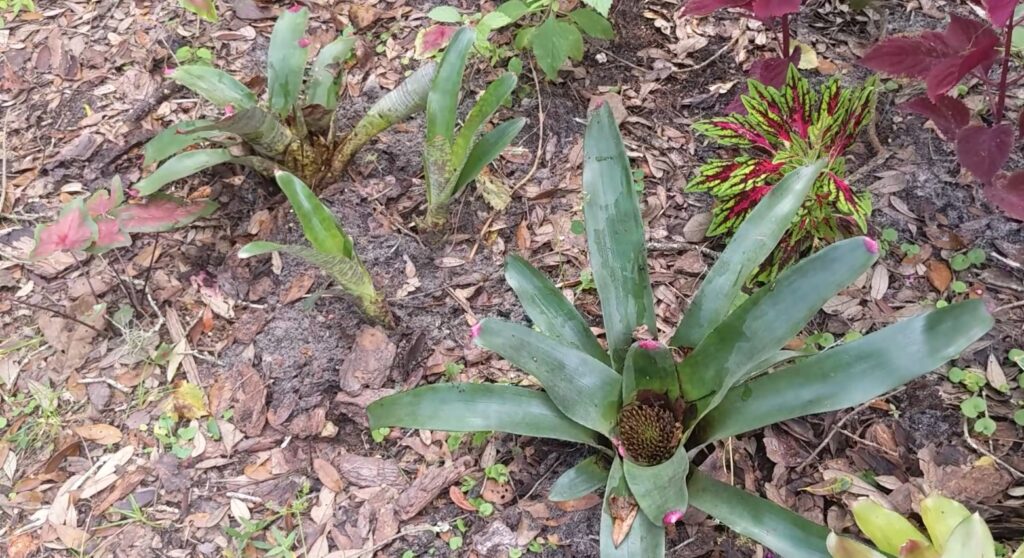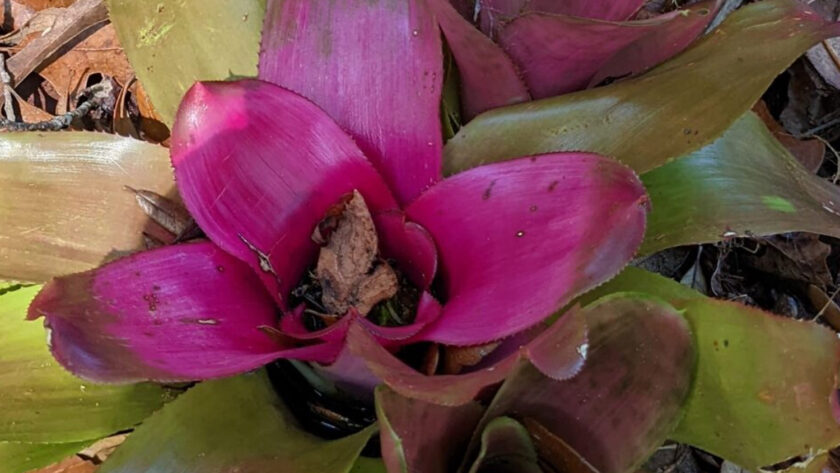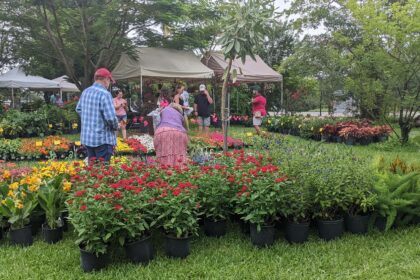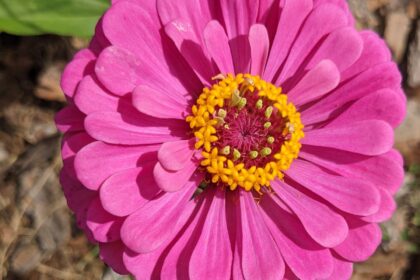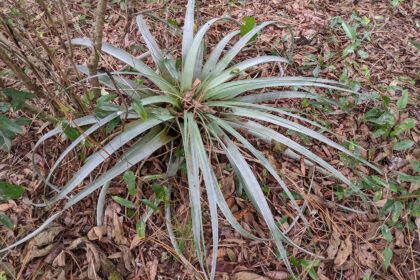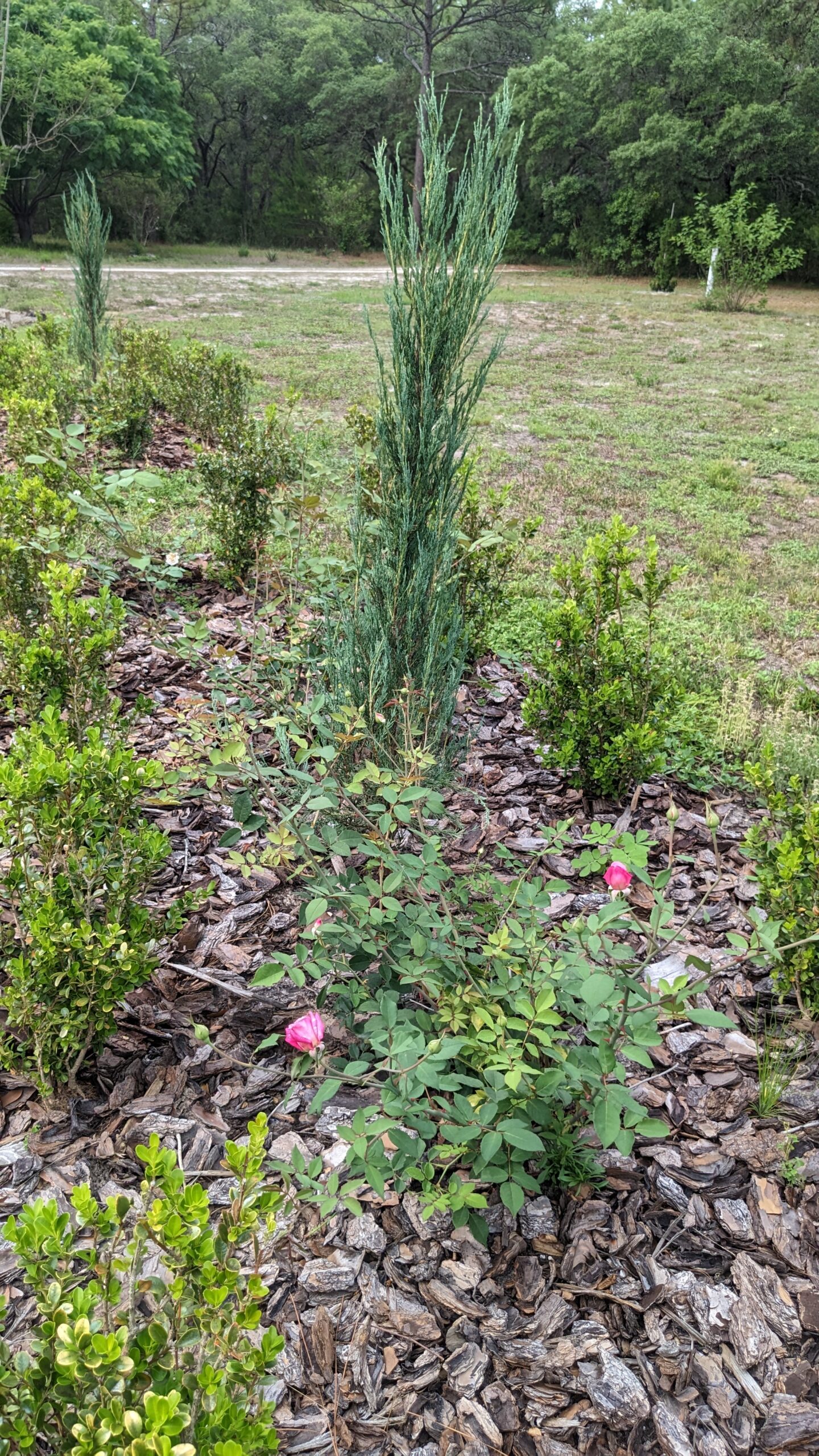Attending the USF Bromeliad Bash has inspired me to create better bromeliad displays. The first step is to divide a couple of the existing species that I have pretty much neglected save the occasional watering.
I have been in touch with Tom Wolfe of Lobo Bromeliad Landscaping in Lutz near Tampa and Grower Jim’s from Apopka near Orlando (story to come this week). I purchased five plants from Wolfe at the USF Bromeliad Bash and five from Jim on etsy. Super excited to start designing more with these versatile plants.
The first bromeliads I divided are painted fingernail (neoregelia spectabilis). I believe I found the main momma plant doing pathetically in my back woods. I planted her 15 years ago and didn’t upkeep that garden. Well, she simply adores the new area and the fact that I water her during times of drought… so much so, she made tons of babies!
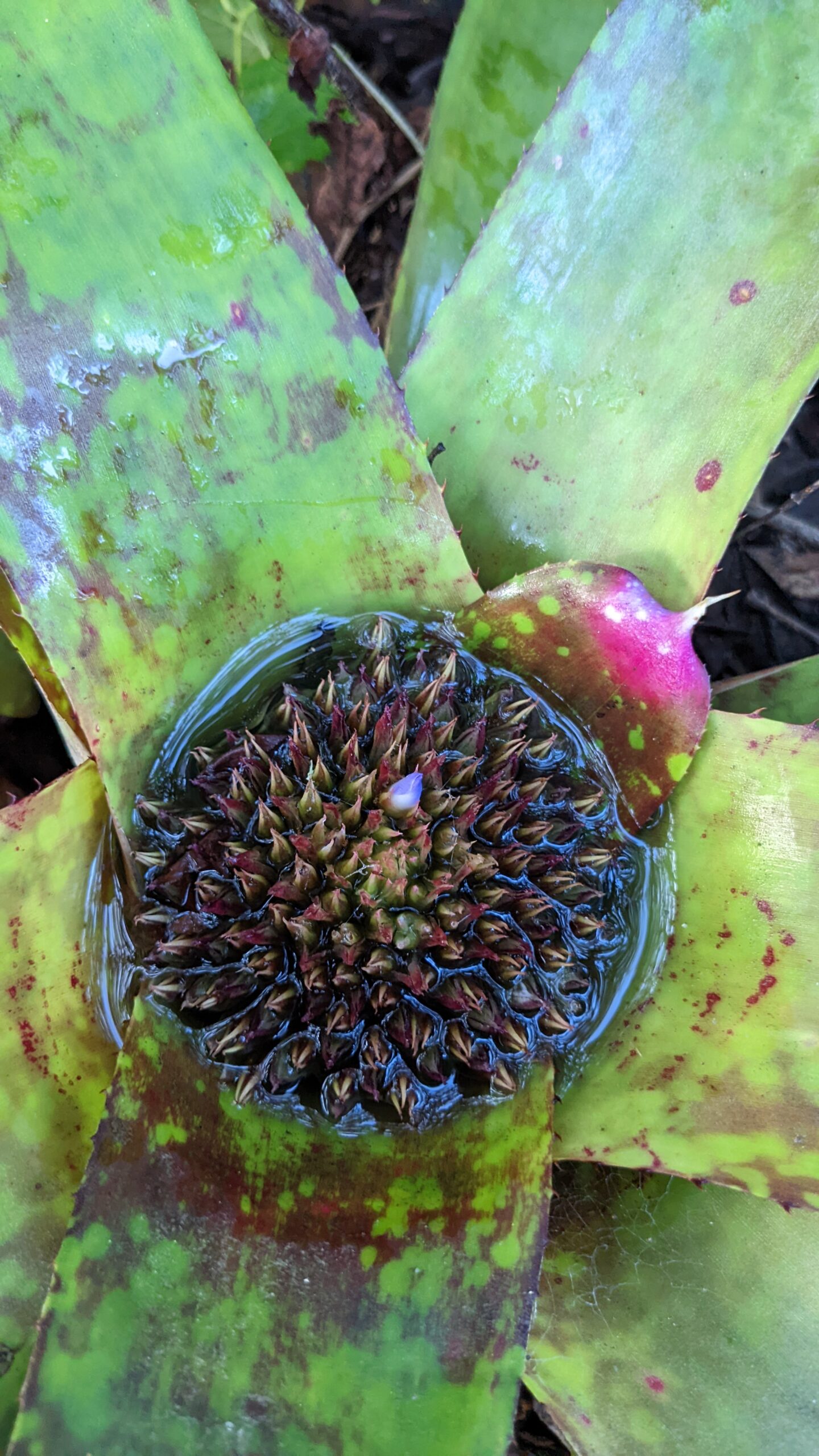
Since I attended the bromeliad sale at USF, I have decided to pay more attention to these truly remarkable plants. Some call these mosquito breeders because they store water in their wells, but I just love them. I have heard of folks sucking out the water with a turkey baster to kill the larvae. Be sure not to overfill them…keeping them at just about 1/4 full. There needs to be a fine balance between root rot and dehydration… but I don’t worry too much about overwatering because our soil drains quickly here.
These specific plants are not terrestrial and don’t require soil. They are epiphytes that don’t deprive their host of nutrients… they simply use their aerial roots to anchor to the trees for support. They get their nutrients through their “leaves.” Be careful, however! Many of these have serrated spiney leaves and pointed tips that will puncture you… similar to agaves.
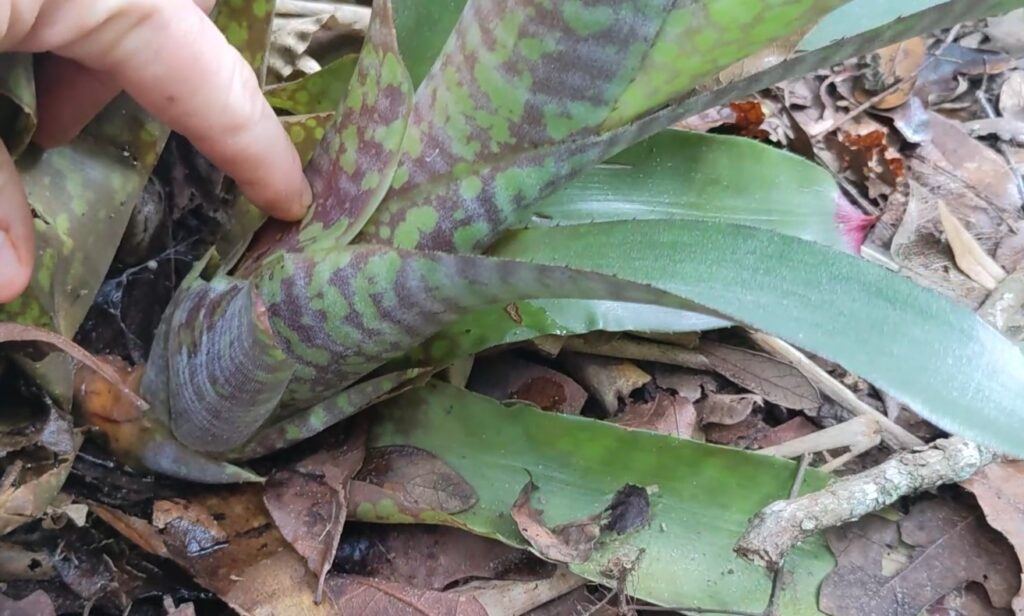
There are approximately nine plants in the first batch… two of which were likely declining momma plants. Not only did it puncture me, it was full of bull ants and all of their larvae. I managed to separate half of them pretty easily by partially breaking them off and cutting the areas I couldn’t separate with pruners. The larger, older ones were easier to break apart. The smaller pups required the Fiskars.
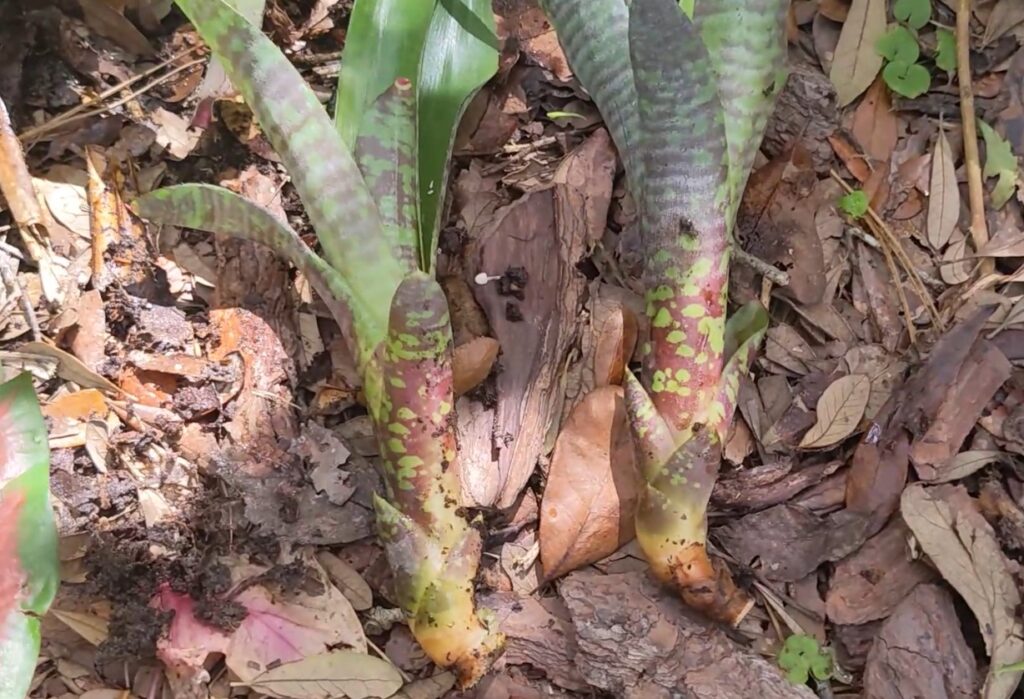
I dug shallow holes and filled it with orchard potting soil… not that it’s necessary. This is a mix of bark, charcoal, perlite, and coconut coir. Obviously, these bromeliads grew well enough in the Florida sand to make tons of offspring. They do require good drainage and should not be planted too deep. While dividing, it’s the perfect opportunity to empty the vases and refill them with water. I actually didn’t have to get out the hose because another thunderstorm rolled through while I was planting these.
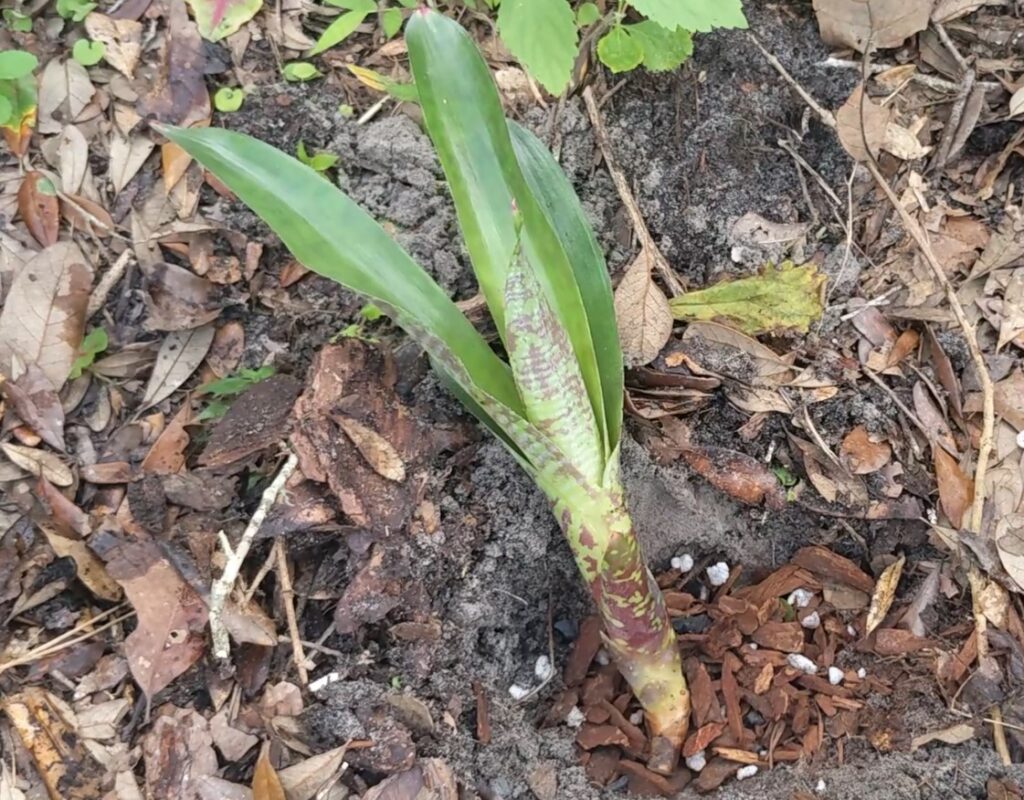
It really is that simple.
After flowering, the bromeliad momma, “bromamma” for short, sends out pups. This is her last-ditch effort to leave progeny. This is the natural circle of life. From what I have read, the sooner pups are removed, the more pups the momma will make… but I have to verify this statement. This is a bromamma in decline. She seems to be rotting and is filled with bull ants and their larvae.
